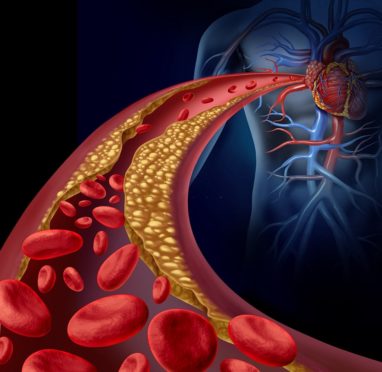Hi there!
In this article we’ll talk about atherosclerosis, a chronic and progressive cardiovascular disease that affect adults and elderly, causing cardiovascular events such as ischemia, acute myocardial infarction and stroke.
Thus, we’ll see how physical exercise can play an important role in the prevention and treatment of this pathology.
Atherosclerosis: meaning, symptoms, risk factors and treatment
Atherosclerosis is a chronic inflammation of the inner lining of an artery, caused by the buildup of fat, cholesterol, calcium and other substances found in the blood (this buildup is called plaque).
As plaque increases, the wall of the blood vessel become thick. This leads to a narrowed channel within the artery reducing the blood flow, and also the amount of oxygen and other nutrients that reach the body.
The plaque may break over time. When this happens, blood clots can be formed, narrowing the arteries even more.
This phenomenon is widespread and, depending on artery affected, it can cause coronary artery disease, carotid artery disease, peripheral artery disease, or stroke.
Atherosclerosis usually doesn’t cause signs and symptoms until it severely narrows or totally blocks an artery. But when they occur might include as follows:
-Angina (in the coronary artery disease);
-Sudden weakness, confusion, breathing problems, loss ofconsciousness (in the carotid artery disease);
-Numbness, pain (in the peripheral artery disease);
-Lack of strength, tingling, lack of sensitivity (in the stroke).
Below are reported the major risk factors leading to the development of this condition:
- Elevated levels of cholesterol and triglycerides in the blood;
- High blood pressure (hypertension);
- Unhealthy diet;
- Older age;
- Family history of heart disease;
- Smoking, stress and alcohol;
- Physical inactivity.
Treatments for atherosclerosis may include lifestyle changes (diet, physical activity), medicines and surgery (stent, bypass) to reduce the risk factors.

Regular exercise is important both as primary (to inhibit atherosclerotic phenomena) and secondary prevention (to avoid the risk of myocardial infarction or death).
Physical exercise produces positive effects on the atherosclerotic process and its clinical manifestations:
- Reduces HR at rest and during submaximal exercise;
- Reduces blood pressure;
- Reduces cholesterol and triglycerides;
- Helps the body to manage blood sugar and insulin levels, which lowers the risk of type 2 diabetes;
- Helps to reduce overweight and obesity when combined with a reduced-calorie diet;
- Reduces levels of C-reactive protein (CRP) in the body. This protein is a sign of inflammation and high levels of CRP may increase the risk of coronary heart disease;
- Improves endothelial function;
- Reduces oxidative stress;
- Produces beneficial effects on vascular inflammation, atherogenesis and thrombosis;
- Improves fitness cardiorespiratory, muscle strength and flexibility.
Suggestion for a correct training program in the atherosclerotic individuals
As we mentioned in the previous article (Physical exercise in hypertensive patients), guidelines for exercise prescription follow the FITT principle: Frequency, Intensity, Time and Type.
The following table provides indications about a correct training program for the atherosclerotic individuals.
| Aerobic exercise | Strength exercise | |
| Frequency | 5 days per week if moderate intensity or 3 days per week if vigorous intensity | 2-3 non-consecutive days per week |
| Intensity | Moderate (50-69% of target heart rate*) or vigorous (70-89% of target heart rate) | Determined by the amount of weight lifted, the reps and sets. Goal of 8–10 exercises, around 1–3 sets of 8–16 reps of each exercise |
| Time | 30 to 60 minutes per session | Up to 1 hour for total body workout, less for split routine workup |
| Type | Any activity that increases heart rate (walking, running, cycling, dancing) | Activities using bands, dumbbells, machines, bodyweight exercise |
*Target heart rate corresponds to 50-85% of maximum heart rate
Although physical exercise produces biologic effect that favorably influence vascular structure and function, it may become dangerous if it’s done in a manner that produces severe myocardial ischemia.
So, you always ask to your doctor what types of activities are safe for you before engaging a physical exercise program.
References
Atherosclerosis. National Heart, Lung, and Blood Institute;
Mehanna E, Hamik A, Josephson RA (2016). Cardiorespiratory Fitness and Atherosclerosis: Recent Data and Future Directions. Current Atherosclerosis Reports, 18(5):26;
Edited by
Dott. Luca Rotundo



Commenta con Facebook